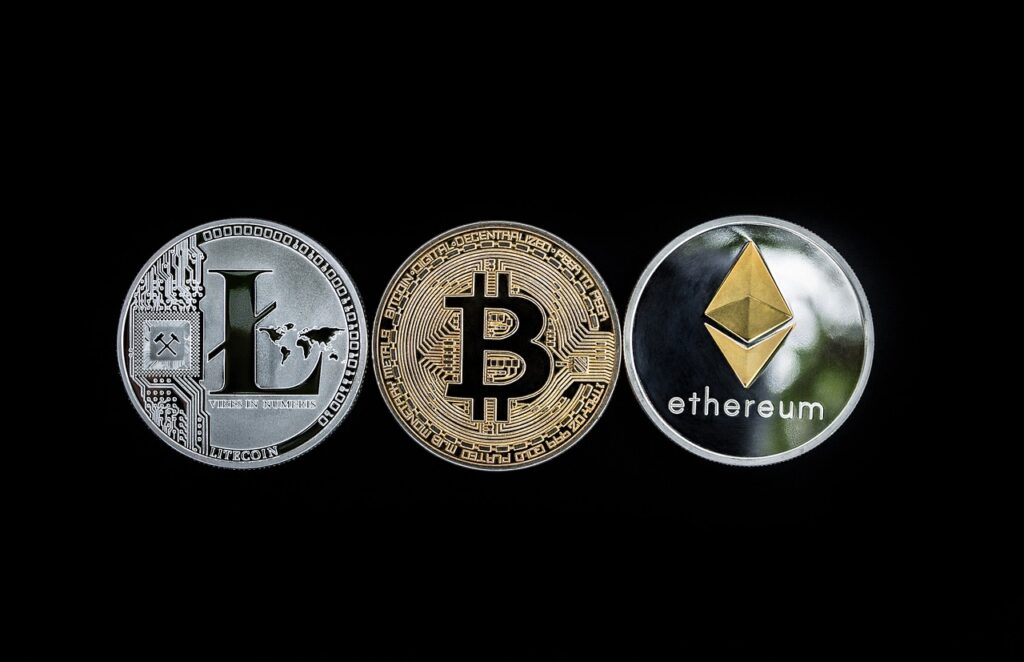
In the ever-evolving world of cryptocurrencies, the pursuit of passive income has become a driving force for investors seeking to maximize their returns. While Bitcoin remains the flagship digital asset, altcoins have emerged as a lucrative avenue for generating passive income through the process of staking. This comprehensive guide will delve into the intricacies of staking altcoins, providing a roadmap to unlocking the full potential of this investment strategy.
Understanding Staking: The Basics
Staking is a consensus mechanism used by proof-of-stake (PoS) blockchain networks to validate transactions and secure the network. Unlike proof-of-work (PoW) systems that rely on computational power, PoS systems leverage the ownership of tokens. By staking their coins, investors help maintain the network’s integrity and, in return, receive rewards in the form of additional coins.
The Appeal of Staking Altcoins
Staking altcoins offers several advantages that make it an attractive option for investors:
1. **Passive Income Generation**: By staking altcoins, investors can earn regular rewards, providing a steady stream of passive income.
2. **Lower Energy Consumption**: PoS systems are more energy-efficient than PoW systems, aligning with the growing emphasis on sustainability in the crypto space.
3. **Network Participation**: Staking allows investors to actively participate in the governance and security of blockchain networks.
Selecting the Right Altcoins for Staking
Choosing the right altcoins for staking is crucial to maximizing returns. Here are key factors to consider:
1. **Network Stability and Security**: Opt for well-established networks with a history of stability and robust security measures.
2. **Staking Rewards and ROI**: Evaluate the potential rewards and return on investment (ROI) offered by different altcoins. Higher rewards may come with increased risks.
3. **Market Liquidity**: Ensure the altcoin has sufficient market liquidity, allowing for easy buying and selling.
4. **Development Activity**: Consider the level of development activity and community engagement surrounding the altcoin.
Top Altcoins for Staking
Several altcoins have gained popularity for their staking capabilities. Here are some noteworthy options:
1. **Ethereum (ETH)**: With the transition to Ethereum 2.0, ETH holders can now stake their coins and earn rewards, contributing to the security of the network.
2. **Cardano (ADA)**: Known for its strong community and innovative technology, Cardano offers attractive staking rewards and a user-friendly staking process.
3. **Polkadot (DOT)**: Polkadot’s interoperability and scalability features make it a compelling choice for staking, with competitive rewards.
4. **Tezos (XTZ)**: Tezos has a unique self-amending blockchain, and its staking process, known as “baking,” offers consistent returns.
5. **Cosmos (ATOM)**: Cosmos is designed to be an internet of blockchains, and staking ATOM tokens can yield significant passive income.
The Staking Process: Step-by-Step Guide
Embarking on your staking journey involves several steps:
1. **Choose a Wallet**: Select a cryptocurrency wallet that supports staking for your chosen altcoin. Many official wallets and third-party options offer staking functionality.
2. **Acquire Altcoins**: Purchase the altcoins you wish to stake from a reputable exchange. Ensure you have a sufficient amount to meet the network’s minimum staking requirement.
3. **Transfer to Wallet**: Transfer your altcoins from the exchange to your staking wallet.
4. **Delegate or Stake**: Depending on the network, you may need to delegate your tokens to a validator or directly stake them. Follow the wallet’s instructions carefully.
5. **Monitor Rewards**: Regularly check your staking dashboard to monitor rewards and network performance.
Staking Pools vs. Solo Staking
Investors can choose between two primary methods of staking: solo staking and staking pools.
1. **Solo Staking**: Involves staking coins independently and running a validator node. While it offers higher rewards, it requires technical expertise and significant initial investment.
2. **Staking Pools**: Allow multiple investors to combine their coins, increasing the chances of earning rewards. Pools are user-friendly and require less technical knowledge.
Risks and Considerations in Staking Altcoins
While staking altcoins can be rewarding, it’s important to be aware of potential risks:
1. **Market Volatility**: Cryptocurrency markets are highly volatile, and the value of staked coins can fluctuate significantly.
2. **Slashing**: Validators can incur penalties, known as slashing, for misbehavior, which may impact stakers.
3. **Lock-Up Periods**: Some networks impose lock-up periods during which staked coins cannot be withdrawn. Ensure you understand these terms before staking.
4. **Security Risks**: Ensure your staking wallet and any third-party services are secure to protect against hacks and unauthorized access.
Maximizing Returns: Tips and Strategies
To make the most of your staking endeavors, consider implementing these strategies:
1. **Diversification**: Spread your investments across multiple altcoins to reduce risk and increase potential rewards.
2. **Regular Monitoring**: Stay informed about network updates, reward rate changes, and validator performance to optimize your staking strategy.
3. **Reinvestment**: Consider reinvesting your staking rewards to compound your returns over time.
4. **Stay Informed**: Engage with the community and follow news related to your chosen altcoins to stay ahead of market trends.
Future of Staking and Passive Income
As the cryptocurrency space continues to evolve, staking is poised to play an increasingly significant role in generating passive income. With ongoing advancements in blockchain technology and the growing adoption of PoS networks, the opportunities for staking altcoins are expected to expand.
Conclusion
Staking altcoins presents a compelling opportunity for investors seeking to unlock passive income in the cryptocurrency market. By understanding the fundamentals of staking, selecting the right altcoins, and implementing effective strategies, investors can maximize their returns while actively participating in the growth and security of blockchain networks. As with any investment, it’s essential to conduct thorough research and consider the associated risks before embarking on your staking journey. With the right approach, staking can be a rewarding endeavor, offering both financial gains and a deeper connection to the world of cryptocurrencies.
#ChatGPT assisted in the creation of this article.







